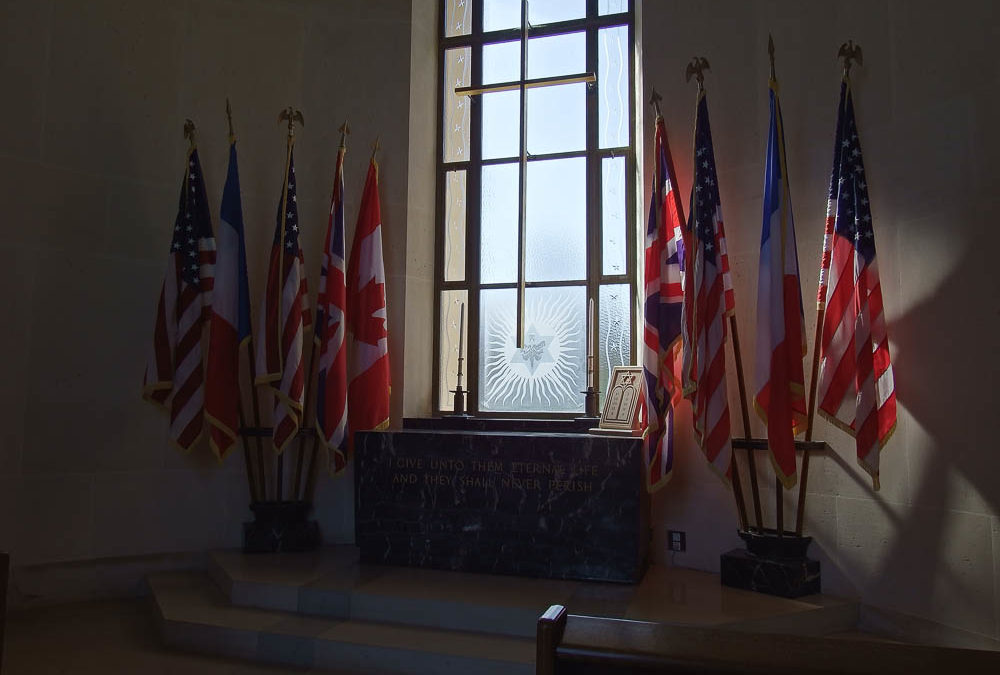As we were walking out of the American Cemetery in Coleville-sur-Mer a strong American voice asked, “Do you speak French?” When we answered, “Not really,” he grinned and got out of his utility golf cart to approach. And that was how we met Walter Benjamin, the Assistant Superintendent of the entire American Battle Monuments Commission.
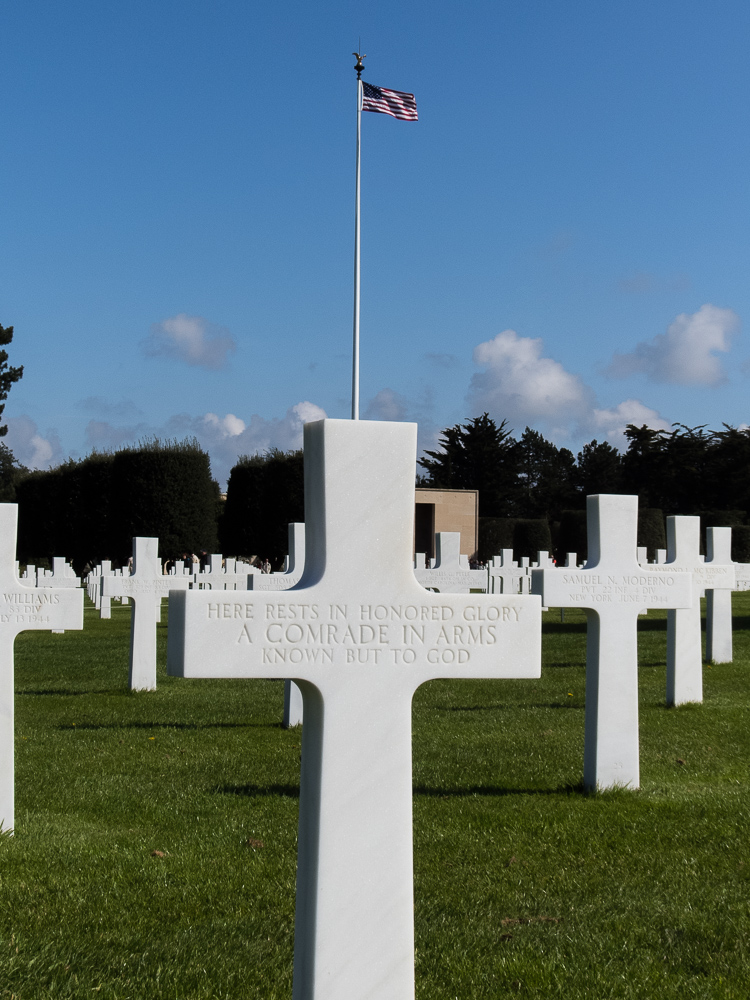
Appearing much younger than he actually is, he’s a strong black man in his early 60’s nattily dressed in a “company tie”, a soft blue jacket with multiple Commission pins and a blue camo ball cap. And his voice was rich and smooth as he asked us about our service and why we came here and then a series of questions about those buried here and their families. “Why did you volunteer to serve?” he assumed and graciously accepted that both our gents had “volunteered” with draft numbers. He and I had not had draft numbers we learned.
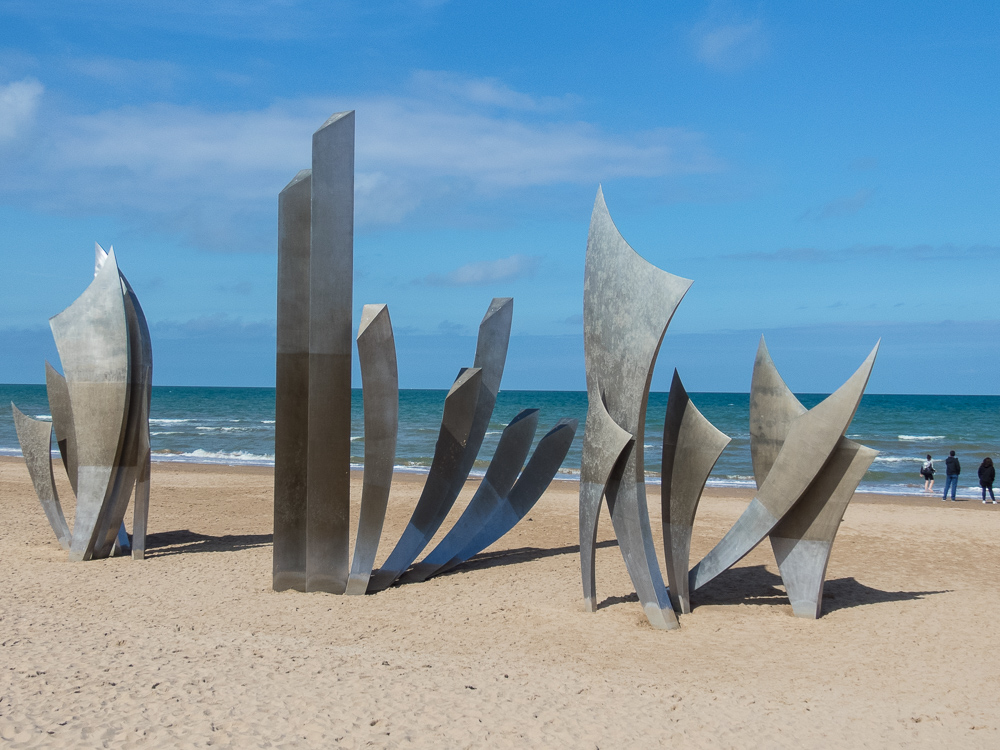
“Think about it. With a US population of around 130 million in 1940, there were 16 million in the services. And 6 million volunteered. Why do you think that is?” We came to no conclusions except they were very much just like us – with multiple reasons and a strong sense of patriotism and doing what’s right.

We had just finished watching their highly-recommended visitor center museum film focused on the stories of some buried there. It’s an appropriate message especially as the Greatest Generation passes on and their stories become diluted with time.
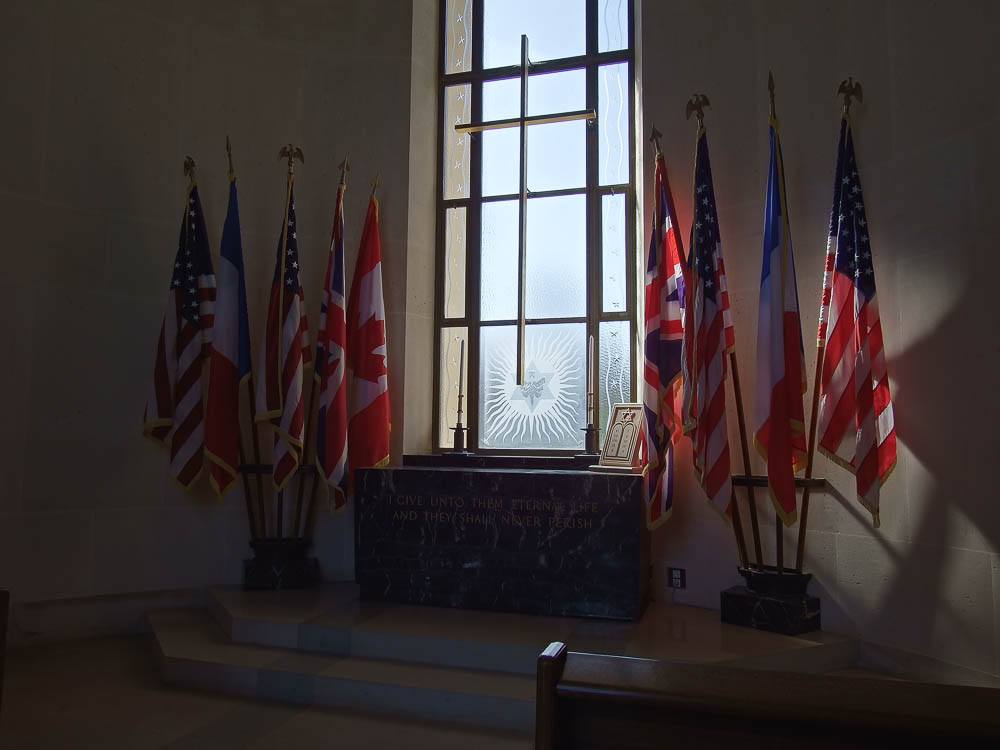

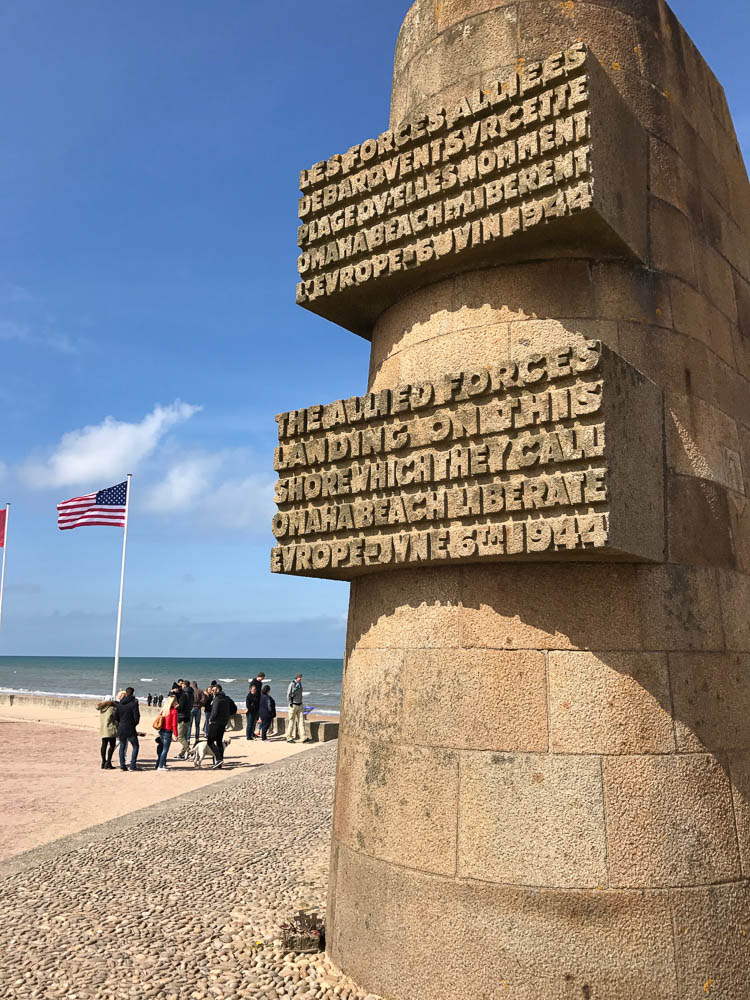
He told us about the Commission and the 25 military cemeteries and 27 memorials they maintain across the globe that honor the services, sacrifice and achievements of the United States armed forces. He asked us to wait while he went to his office to get 2 packets of detailed information but, especially, to give us the names of two books he highly recommends entitled The Gold Star Mother Pilgrimages of the 1930s by John W. Graham, and The Price of Liberty: Paying for America’s Wars by Robert D Hormats. We put them on our reading lists upon return.


We had learned more about William the Conqueror and the Battle of Hastings and the reciprocal Battle of D-Day in two days than we’ve ever forgotten. Much of it was new but here and there long-forgotten rote details were dredged from hidden recesses and a tiny spark of recognition made us more comfortable in our educations. It did make us debate whether current youth are learning these details and whether there will even be recognition of the sacrifices of these 18 and 19 and 25 year olds on these hallowed beaches.
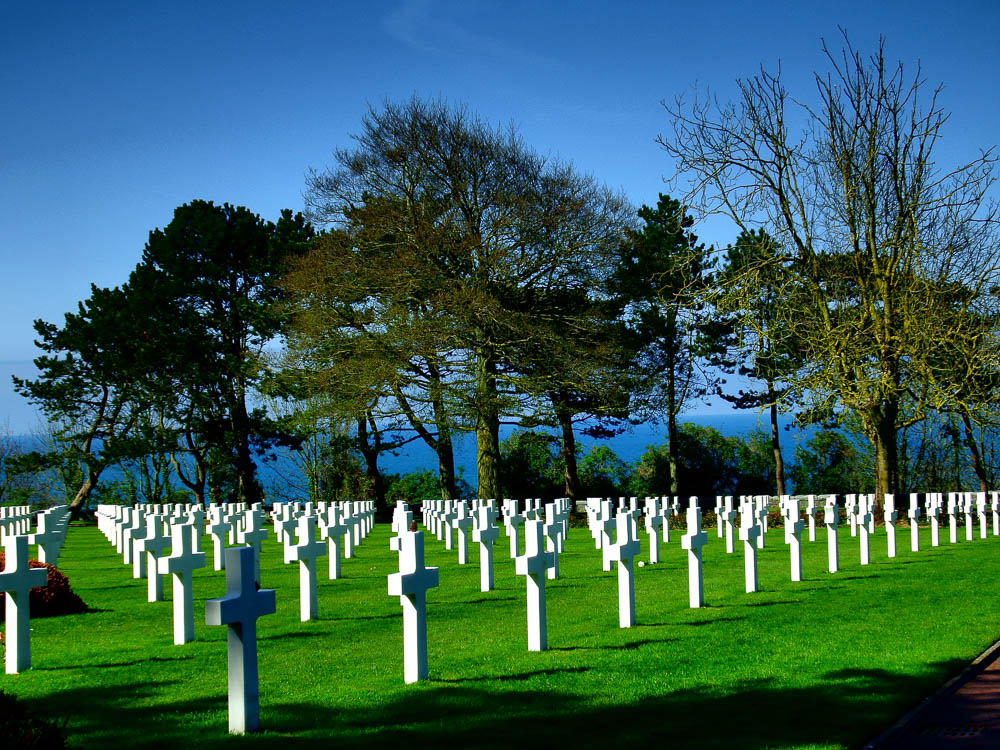
And we think Walter is working on that as well.

